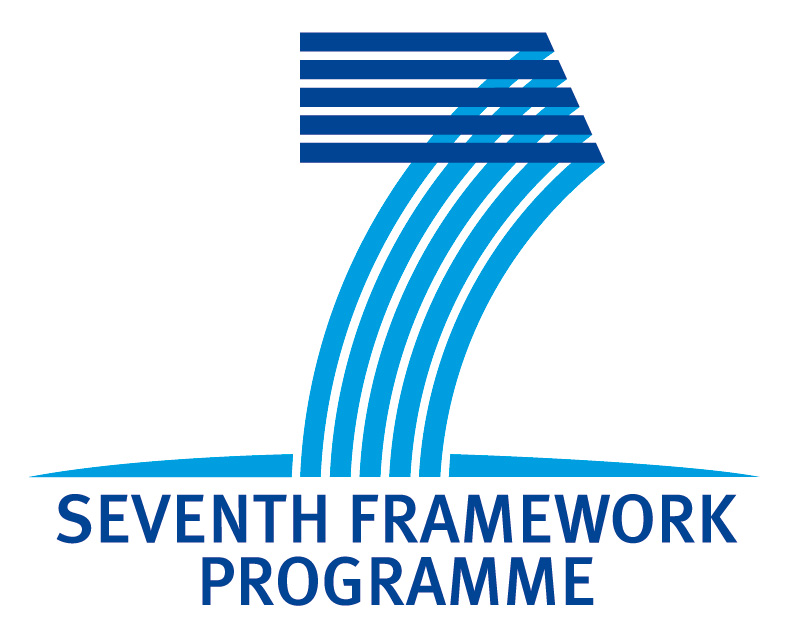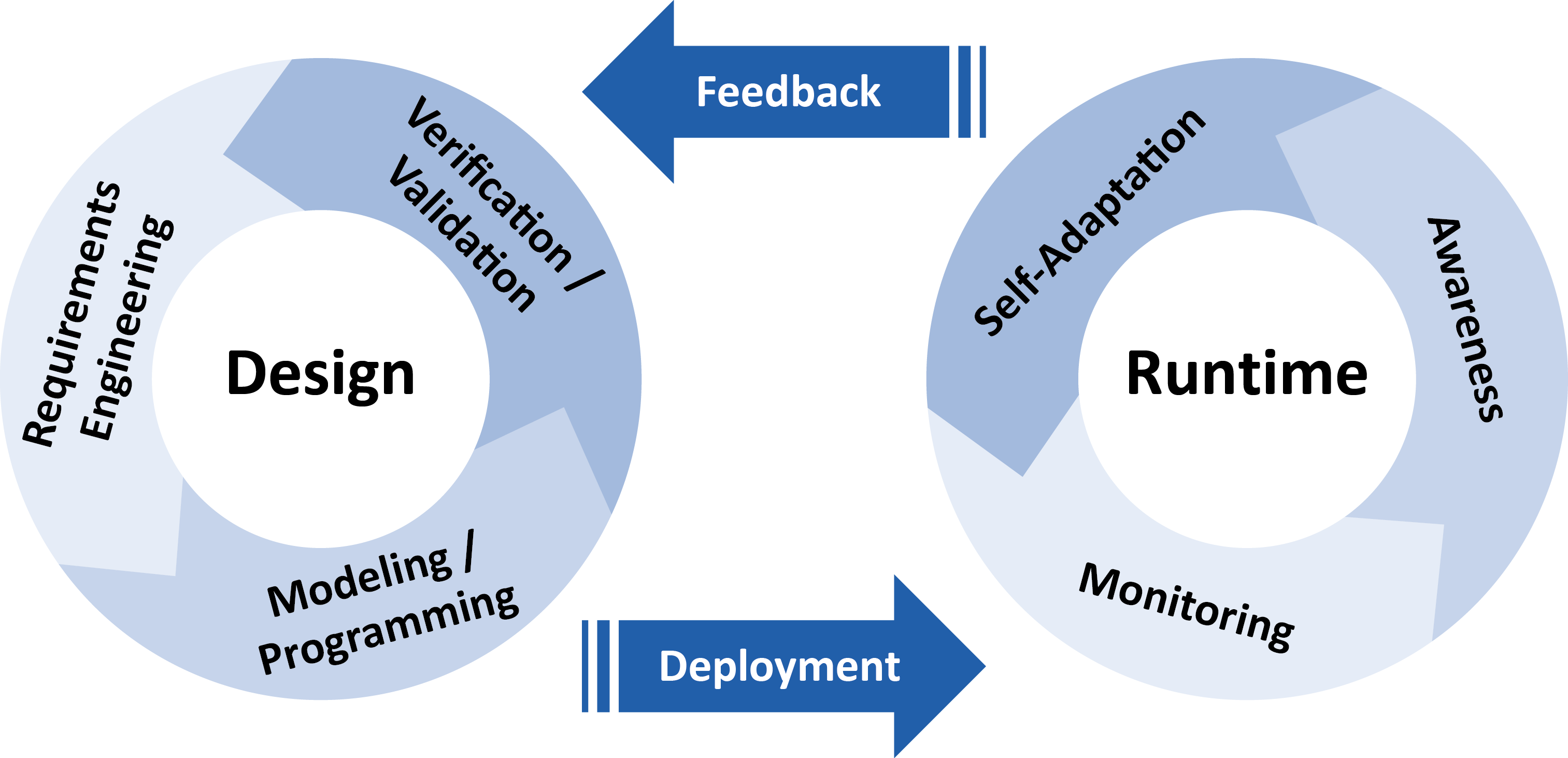| Ensemble Development Life Cycle |
 |
 |
 |
|
To help developers to address the issues posed by the diversity of self-* properties and to engineer adaptive behaviors of ensembles we defined the ensemble development life cycle (EDLC) for autonomic systems.
The life cycle comprises a “double-wheel” and two “arrows” between the wheels providing three different feedback loops: (1) at design time, (2) at runtime and (3) between the two of them.
Design issues of the EDLC are grouped in requirements engineering, modeling & programming, and verification & validation phases. They comprise activities performed offline. EDLC runtime focus on monitoring, awareness and self-adaptation of ensemble-based software systems and are performed online. The deployment and the feedback phases provide the connections between the online and offline activities. Tools developed within the scope of the project have been used in one or more phases of the engineering life cycle of software-intensive
systems, i.e. their analysis, specification, verification, monitoring
and adaptation. and for one or more of the project case studies. The EDLC tool phase list shows which tool is intended for which phase and for which scenarios they have been tested. |
| Last Updated on Thursday, 26 March 2015 16:42 |



